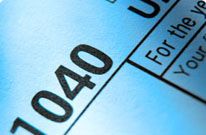Search results
Filing Individual Taxes - IRS
www.irs.govDeadline: April 18
- 1040 Form Instructions
- 1040-EZ Form Instructions
- 1040A Form Instructions
- 1040ES Form & Instr.
- Tax Tables Download
- Schedule A Form Instructions
- Schedule D Form Instructions
These instructions explain how to complete Schedule D (Form 1040). Complete Form 8949 before you complete line 1b, 2, 3, 8b, 9, or 10 of Schedule D. Use Schedule D: To figure the overall gain or loss from transactions reported on Form 8949; To report certain transactions you don't have to report on Form 8949;
SCHEDULE D (Form 1040) Department of the Treasury Internal Revenue Service Capital Gains and Losses Attach to Form 1040, 1040-SR, or 1040-NR. Use Form 8949 to list your transactions for lines 1b, 2, 3, 8b, 9, and 10. Go to www.irs.gov/ScheduleD for instructions and the latest information. OMB No. 1545-0074. 2023. Attachment Sequence No. 12
Use Schedule D (Form 1040) to report the following: The sale or exchange of a capital asset not reported on another form or schedule. Gains from involuntary conversions (other than from casualty or theft) of capital assets not held for business or profit.
Dec 27, 2018 · IRS Schedule D is a worksheet that helps taxpayers figure capital gains and losses from their capital assets. Schedule D is divided into three parts, which taxpayers complete to figure...
Oct 19, 2023 · The Schedule D form is what most people use to report capital gains and losses that result from the sale or trade of certain property during the year. TABLE OF CONTENTS. Schedule D. Capital asset transactions.
Jan 20, 2024 · So you’ve realized a profit on your investments? Buckle up and get ready to report your transactions to the Internal Revenue Service (IRS) on Schedule D and see how much tax you owe.
Enter the totals directly on Schedule D, line 8a; you aren’t required to report these transactions on Form 8949 (see instructions). You must check Box D, E, or F below.

